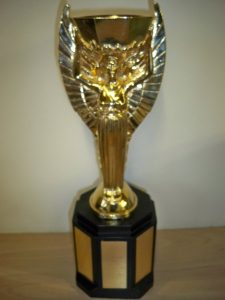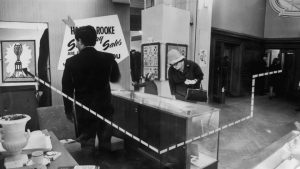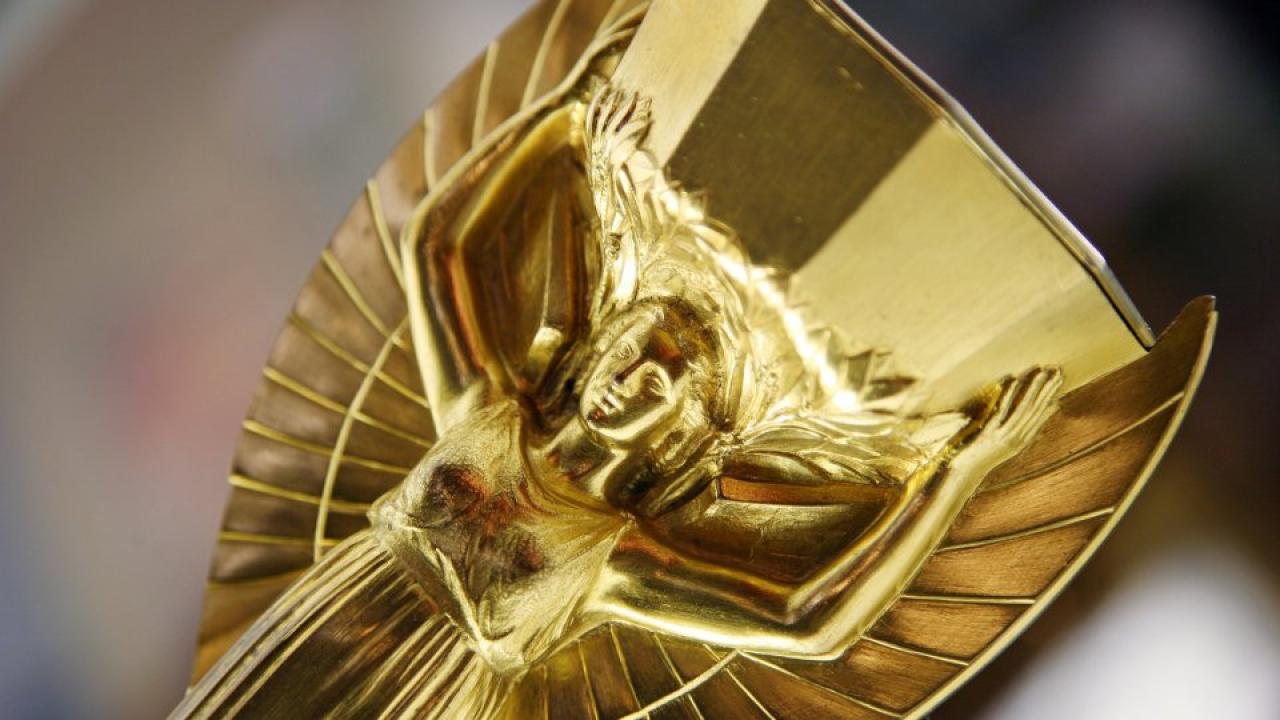A trophy made of gold-plated sterling silver on a white-yellow marble base was manufactured following the design of French sculptor, Abel Lafleur. It depicted Nike, the Greek Goddess of victory holding a cup. This came to be known as the ‘World Cup’ and later nicknamed ‘the Golden Goddess’.

The first Football World Cup tournament was held in Uruguay in 1930. The anecdote goes like this that three European nations travelled together in ‘Conte Verde’- the ship- to make their trans-Atlantic voyage to the South American country. The ship also took Jules Rimet, the man responsible for creating a World Cup tournament, who packed the World Cup trophy in his suitcase and set sail for Uruguay. The world later recognized Rimet as the ‘Father of World Cup’ and therefore the Cup was renamed as ‘Jules Rimet trophy’ after the Second World War in 1946.
But this historic trophy was always under threat, theft and recovery. The first threat came from the Nazis during the political furor in the world. The 1938 edition was won by Italy in France after which the tournament was suspended for 11 years due to the outbreak of World War II. As Italy were heavily involved in the war, there was concern for the trophy’s well-being. The Italian Football Federation’s president, Ottorino Barassi, anticipated a Nazi intervention and therefore smuggled the trophy out of the bank to keep it in his apartment in the city. The Nazis almost swiped it by conducting a search of Barassi’s home. But they missed the old shoebox placed underneath Barassi’s bed with the trophy hidden inside.
The Nazis were unsuccessful in keeping their hands on the Cup. But somewhat their wish was fufilled when West Germany became the world champions in 1954. The gorgeous trophy was proudly displayed in Frankfurt after their victory. But, some journalists claimed that when the trophy was taken to Sweden for the next edition, the Cup was 5cm taller and had an altered base from the 1954 version. But the authority did not verify whether the trophy was adapted or exchanged by the Germans.

But, the greatest threat to the trophy came in 1966 when it was stolen from a public exhibition at Westminster Central Hall, just four months prior to the start of the tournament. Before the exhibition, FIFA President Stanley Rous agreed to exhibit the trophy on three conditions: it had to be transported by a reputable security firm, it must be placed in a locked glass case which would be guarded 24 hours a day and it would be insured for £30,000.
Though the Hall authority agreed to the conditions, however, security was not around the clock. On 20th March 1966, somewhere between 11am and 12:10pm with a church service taking place on the floor below, the perpetrator broke in through the back door, smashed the glass case holding the trophy and left with it without a trace.
The theft caused hysteria across administration and press that led to one of the biggest investigations in Scotland Yard’s history. But a week later too, the biggest investigation team could not find the prized possession until it was found out by Pickles.

Pickles, the black and white dog, was on his daily stroll with his master, Corbet, who had set out to the telephone box across the road to see if his brother’s new baby had been born. Suddenly, his pet started sniffing around at an unusual package. According to Corbet, “It was wrapped in tightly-bound newspaper and string, laying against my neighbour’s car wheel. I personally thought it was a bomb. So I put it down. Picked it up, put it down again. Then curiosity took hold. I tore a bit off the bottom and there was a plain disc. Then I tore around and there was Brazil, Germany, Uruguay. I ran back in and said to my wife: ‘I think I’ve found the World Cup!’
Corbet called the police but he himself turned into the main suspect. Enquiries followed for some weeks. Later, he was cleared of all suspicions and overnight turned into a celebrity. Corbet and Pickles appeared on television multiple times, received a cash reward and even Pickles was given a medal and a year’s supply of dog food.
Many days later it was revealed that Sidney Cugullere, a London gangster, stole the trophy with his brother Reg. Gary Cugullere, son of Reg, revealed the fact and also added that his uncle had stolen the trophy “for the thrill” and not for financial gain. That year England won the World Cup and kept the trophy with them.

But the Jules Rimet Cup was lost forever on a December evening of 1983. When the World Cup commenced, FIFA made a declaration about giving the Cup to the team who would win three finals. Brazil truly deserved the trophy after winning three World Cups. FIFA presented it permanently to the Brazilian Sports Confederation (CBD), now the Brazilian Football Confederation (CBF).
The trophy was placed on display on the third floor of the CBF offices in Rua da Alfandega. On the day of the theft, the building’s nightwatchman was tied by a group of thieves who opened the wooden frame of the bulletproof-glassed display box and robbed it. Intense investigation and enquiries followed but the trophy was not recovered. It is believed that the trophy was melted down into gold bars in a Brazilian foundry. The Jules Rimet Trophy was never seen after that and went into history book forever.




